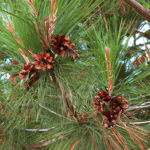
A Guide on Identifying Oak Trees, Collecting Acorns, and Processing Them into Food
In the world of self-reliance and survival, being able to identify and utilize the resources provided by nature is crucial. One such valuable resource is the mighty oak tree and its often-overlooked treasure, the acorn. In times of need, acorns can provide a sustainable source of food and nutrition. In this guide, we will explore how to identify oak trees, collect acorns, and process them into a versatile food source.
Identifying Oak Trees
Before you can begin collecting acorns, you need to be able to identify oak trees. Oaks are commonly found in many regions, so chances are, you have encountered one before. Look for these key features:
- Leaves: Oak trees typically have lobed or serrated leaves. Each species of oak has its own unique leaf shape, so it’s helpful to familiarize yourself with the different varieties in your area.
- Bark: Depending on the species, oak bark can range from smooth to rough and can be gray, brown, or black in color.
- Acorns: Keep an eye out for oak trees that produce acorns. Acorns are the fruit of the oak tree and are typically small, oval-shaped nuts. They can vary in color and size, depending on the species.
Once you are confident in identifying oak trees, it’s time to move on to the next step: collecting acorns.
Collecting Acorns
Acorn collection is a simple task, but it requires some preparation. Equip yourself with a sturdy bag or basket, gloves, and a tarp to make your harvest more efficient. Here’s what you need to do:
- Timing: Acorns usually fall from oak trees in the late summer or early fall. Keep an eye on the ground for freshly fallen acorns.
- Look for Quality: Not all acorns are suitable for consumption. Select acorns that are free from mold, holes, or cracks. Avoid acorns with weevil larvae inside, as they can affect the taste and quality of the final product.
- Quantity: Collect as many acorns as you can. Remember, acorns can be stored for a considerable amount of time, so having a surplus is always beneficial.
- Location: If possible, gather acorns from different oak species. This will provide you with a variety of flavors and nutritional profiles.
Now that you have a collection of acorns, it’s time to process them into edible food.
Processing Acorns
Acorns contain high levels of tannins, which can make them bitter and inedible if not properly processed. Follow these steps to remove the tannins and transform the acorns into a delicious and nutritious food source:
- Cracking: Use a nutcracker or hammer to crack the acorn shells. Be careful not to crush the nut inside.
- Leaching: Fill a container with water and place the cracked acorns in it. Allow the acorns to soak for several days, changing the water daily. This process will leach out the bitter tannins.
- Drying: Once the acorns have been properly leached, spread them out on a clean, dry surface to dry. This can take several days to a week, depending on the humidity levels in your area.
- Grinding: Once dry, grind the acorns into a fine flour using a blender or food processor. This acorn flour can be used in a variety of recipes.
Congratulations! You now have a valuable and versatile food source at your disposal. Acorn flour can be used as a substitute for regular flour in baked goods, or as a thickener in soups and stews. Get creative and experiment with different recipes to make the most out of this nature-given resource.
Remember, in times of uncertainty or emergency, having the knowledge and skills to utilize resources such as acorns can mean the difference between going hungry and thriving. Start honing your self-reliance skills today and prepare for whatever challenges may come your way.



GIPHY App Key not set. Please check settings